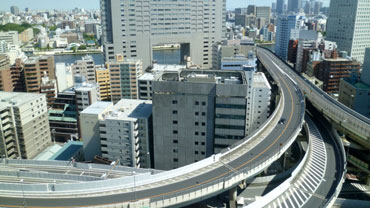Process
① Selective cutting of ripe old trees
Selective cutting is the process of choosing and cutting down a tree. We choose trees that will soon fall down due to their age and health, as the falling down of these trees can cause damage to the forest.
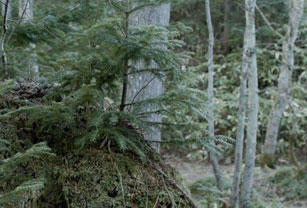
② Sorting the used parts of the wood
There are many knots and tar bags in a log. There are also cells with a unique characteristic called “ate.” Some of these aspects are unsuitable for use during the making of Oribako.
We sort these parts, and then we choose the usable parts to be used as the wood shavings for making Oribako.
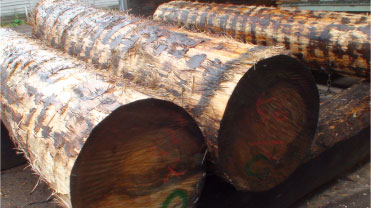
③ Orange wedging (Cutting like orange slices)
We insert a stake into the log and then break it, which makes the log easier to process. We then cut off the epidermis and the core of the tree, which is broken into the shape of firewood.
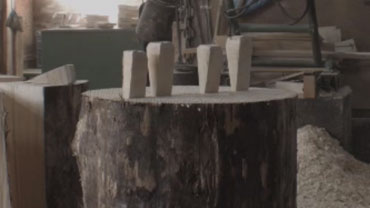
④ Structuring of / material collecting for the
basal plate
We use the materials that were removed from the epidermis and the core of the tree.Then, we use wood shavings with a thickness of around 1mm.
We collect the materials and maintain the state of a live tree with a much greater moisture content.

⑤ Drying
Mold grows more easily on live trees. Because it takes too much time to naturally dry mold, we make full use of our original drying method, manipulating drying temperatures and times using past experience.
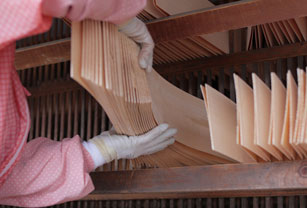
⑥ Sorting
After the wood has been dried, we carefully remove the parts with small knots, dirt, and curves.
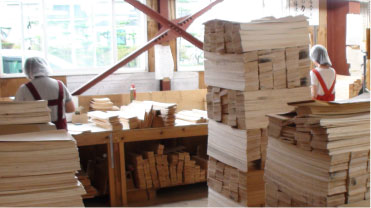
⑦ Plywood pasting
Molding a box from a single piece of wood shaving can result in a decrease in quality depending on the curvature and the strength of the wood. Therefore, we make plywood and then paste together the pieces with unique characteristics.
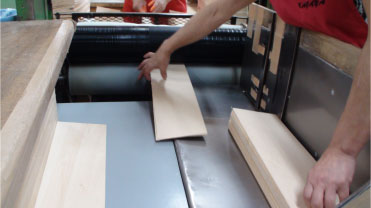
⑧ Kerf cutting
With a carving knife, we make a cut through the piece of wood that is to be bent. This is how we make the bent part of Oribako and why the box is called Oribako. At this time, we must determine the sharpness of the cutting tool and the precision of the cutting tool’s angle.
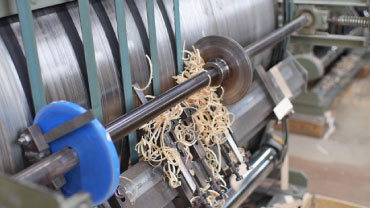
⑨ Otoshi / Structure collecting
This is the process of collecting the materials to become the side of the box. They are from a large and long plank of wood.
Because we cut the wood depending on the height of the product, Otoshi is the name of this cutting process.
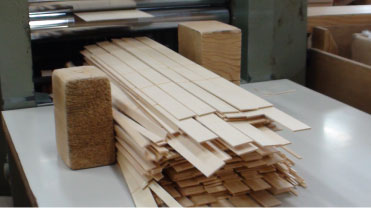
⑩ Strengthening and hardening
The materials that will be used to make the sides of Oribako have precise margins to allow for proper pasting.
We fasten the margins for pasting using paste and wire to strengthen and harden the box; this method is called Katame. We also carefully check the curves and stains at this point.
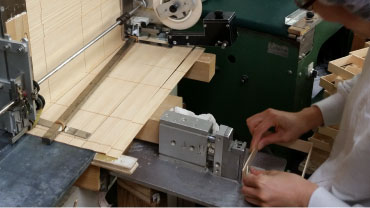
⑪ Installing the bottom
We laminate a part of the soleplate to lateral materials. Soleplate has the right side and the wrong side, so we pay attention whether there is paste properly.
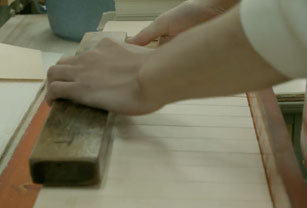
⑫ Wrapping
We wrap the united product after installing the bottom. In order to manage moisture content, we wrap it in a traditional straw paper.
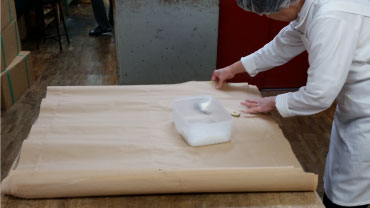
⑬ Storing
We allow the finished and packed product to stand idle until shipment.
This allows the paste to dry and allows the curves of the wood to set.
We keep the temperature and humidity in our warehouse at an approximately constant level to avoid changes to the product caused by fluctuating weather conditions.
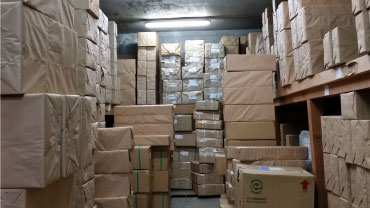
⑭ Packing
The top and bottom of Oribako are shock resistant up to 50 kg. However, Oribako has low shock resistance on the sides.
We therefore change the packing method depending on the product’s size.
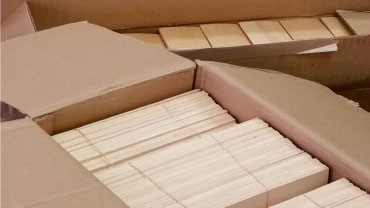
⑮ Mailing / Delivery
We deliver the packed product by arranging a delivery carrier. From the creation of Oribako to it being given to the customer, there are many work processes.
